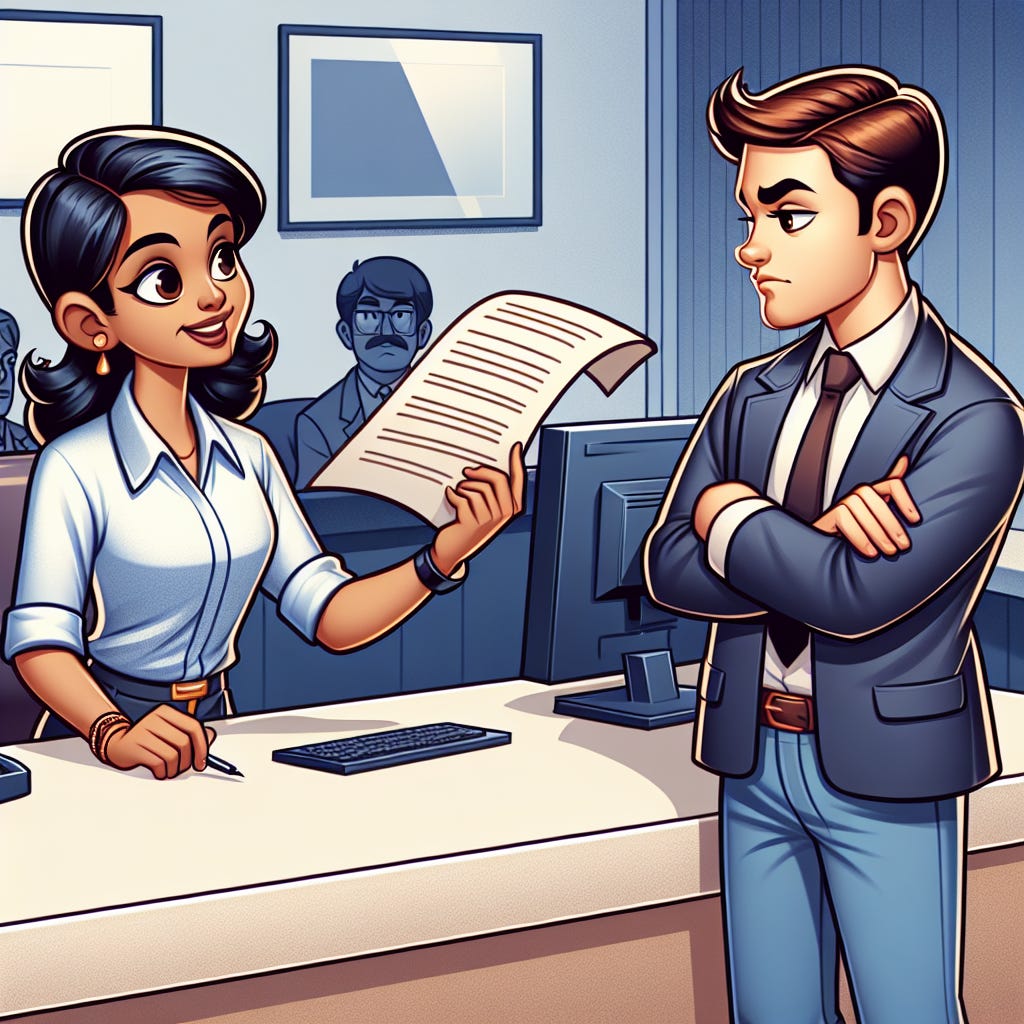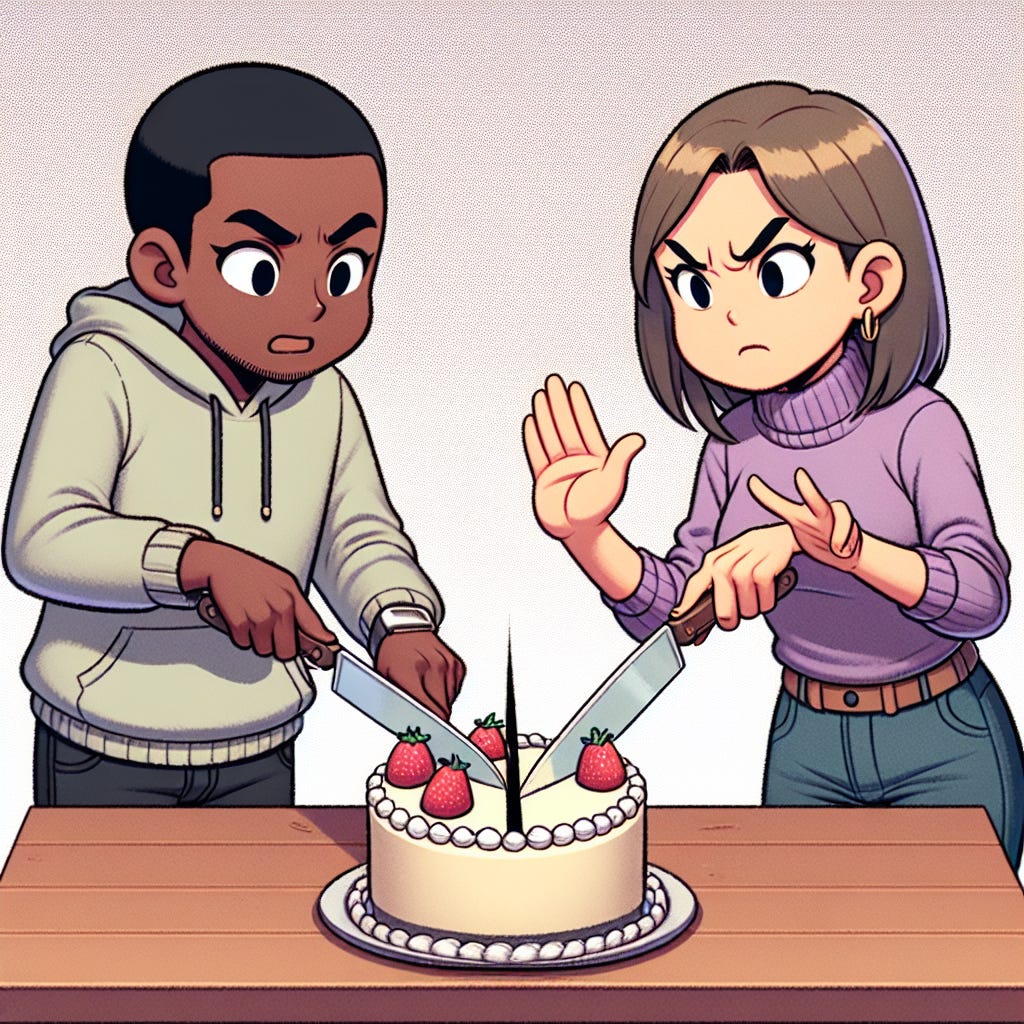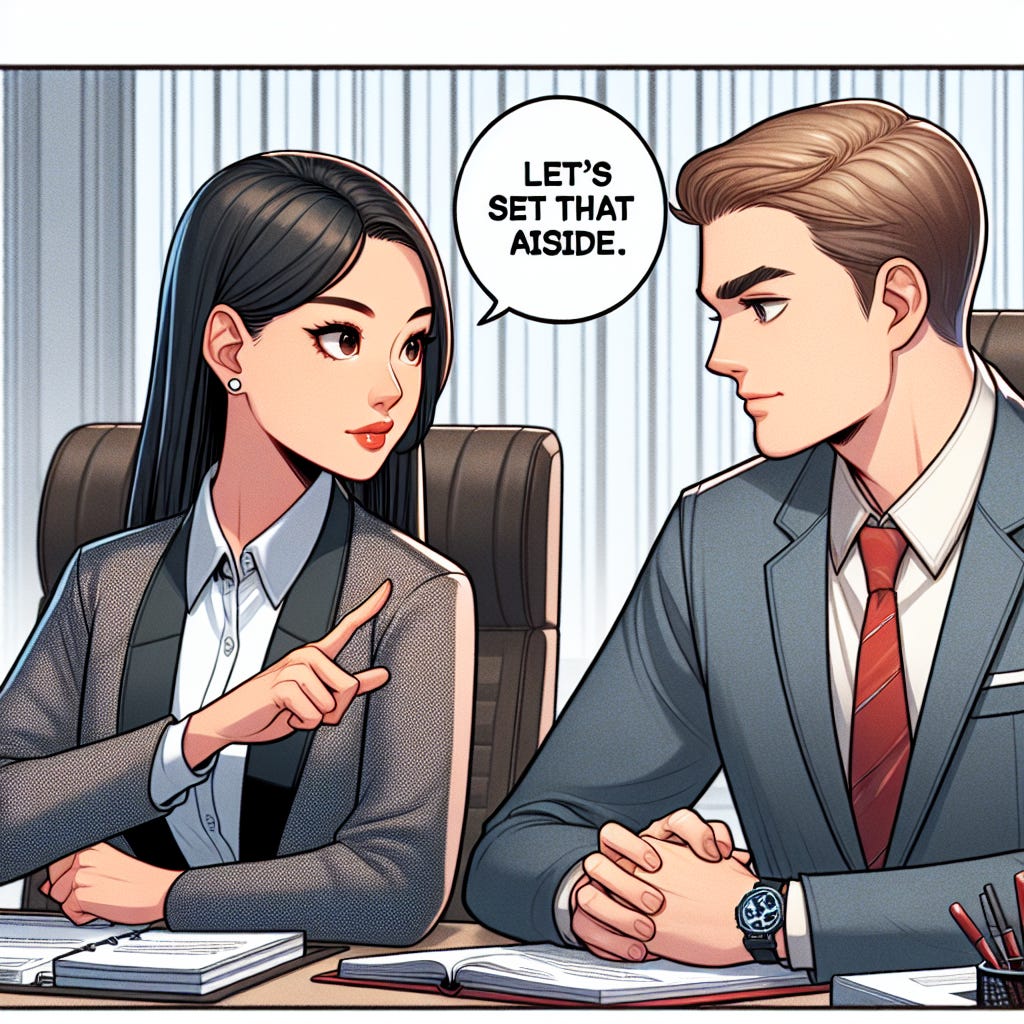Welcome to the third part of my series on High-Impact Negotiation Frameworks. In the previous posts, I covered foundational negotiation principles and early-stage tactics that set the stage for successful negotiations. Today, I will delve into middle-stage tactics that help you maintain momentum and keep the negotiation moving in your direction. These strategies are crucial for navigating the complexities of the negotiation process and achieving favourable outcomes.
The Importance of Middle-Stage Tactics
Middle-stage tactics are essential for sustaining and steering the negotiation toward your desired outcome. Like chess, the middle game is where most of the action happens. It's where you execute your strategy, adapt to new information, and make critical moves determining the negotiation's trajectory. By employing these tactics, you can maintain control, build leverage, and create opportunities for favourable concessions.
Middle-Stage Tactic 1: The Vise Technique
The Vise Technique is a powerful negotiation tactic that involves pressure on the other party to make concessions. It uses phrases like "You'll have to do better than that" or "That's not good enough" to create a sense of urgency and pressure. After saying, "You'll have to do better than that," remain silent. Silence is a very powerful negotiation tactic. It makes people very uncomfortable, flusters them, and often causes them to give up key points in their hurry to fill the silence.
Example: Henry Kissinger, the former U.S. Secretary of State, was known for his relentless pursuit of excellence. His speechwriter, Winston Lord, once presented a draft speech to Kissinger. After reviewing it briefly, Kissinger asked, "Is this the best you can do?" Lord took the speech back, made improvements, and presented it again. Kissinger again asked, "Is this the best you can do?" Finally, a frustrated Lord exclaimed, "Yes, if you want better, get someone else." At this point, Kissinger calmly replied, "Thank you. I will now read it." Lord was shocked to realize that Kissinger had never read the proposal until he was assured it was the best it could be. Similarly, applying the Vise Technique in negotiations can create a sense of urgency and pressure on the other party to make better offers.
In Summary:
The Vise Technique involves applying pressure on the other party.
Use phrases like "You'll have to do better than that" to create urgency.
Remain silent after making the statement to increase pressure.
Silence is a powerful negotiation tactic that makes people uncomfortable and more likely to concede.
If the Vise Technique is used on you, counter with, "Exactly how much better than that will I have to do?"
This tactic can lead to favourable concessions.
Middle-Stage Tactic 2: Handling the Person Who Has No Authority to Decide
In many negotiations, you may encounter a person who does not have the authority to make final decisions. This can be frustrating and lead to delays. The key to handling this situation is to recognize it early and adjust your strategy accordingly. Instead of pressing for a decision, focus on gathering information and building rapport with the person.
Negotiate the very lowest price you can use all these tactics. Then say, "This looks fine. I just have to run it by my board of directors, but I'll get back to you tomorrow with the final okay." The next day, return and say, "Boy, are my directors tough to deal with right now. I felt so positive I could sell it to them, but they just won't go along with it unless you can shave another couple hundred dollars off the price." Invariably, you will get it.
If you use the Higher Authority tactic, ensure your higher authority is a vague entity, such as a pricing committee, the people back at corporate, or the marketing committee. If you tell the other person that your manager would have to approve it, their first thought will be, "Then why am I wasting time talking to you? If your manager is the only one who can decide, get your manager down here." A vague entity appears unapproachable.
To handle the Higher Authority tactic used on you, try to remove the other person's resort to higher authority before negotiations start. Get them to admit they could decide if the proposal was irresistible. Say, "Let me be sure I understand. If this proposal meets all of your needs, is there any reason why you wouldn't give me a decision today?"
If you can't remove their resort to Higher Authority, follow these three steps:
Appeal to their ego: With a smile, say, "They always follow your recommendations, don't they?"
Get their commitment: Say, "You will recommend it to them, won't you?" If they say no, they won't recommend it because.... you've drawn out an objection, which is a buying signal.
Use the qualified "subject to" close: Say, "This would be subject to your committee's approval, so why don't we write up the paperwork 'subject to' their approval?"
Always maintain your resort to a Higher Authority and try to remove the other person's resort to a higher authority.
In Summary:
Don't let the other side know you have the authority to decide.
Your higher authority should be a vague entity and not an individual.
Even if you own your own company, you can still use this by referring to your organization.
When negotiating, leave your ego at home. Don't let the other person trick you into admitting you have authority.
Attempt to get the other person to admit they could approve your proposal if it meets all their needs. If that fails, go through the three counter tactics: Appeal to their ego, get the commitment they'll recommend to their higher authority, and use a qualified "subject to" close.
If they force you to decide before you're ready, offer to decide, but let them know the answer will be no unless they give you time to check with your people. If they're using escalating authority on you, revert to your opening position at each level and introduce your levels of escalating authority.
Middle-Stage Tactic 3: The Declining Value of Services
The Declining Value of Services tactic is based on the principle that the perceived value of services decreases rapidly after they have been performed. Unlike material objects that may appreciate over time, services quickly lose their perceived value. Therefore, any concession you make in a negotiation should be reciprocated immediately, as its value diminishes rapidly.
Example: You are negotiating a consulting contract and agree to provide an additional service at no extra charge. If you don't ask for a reciprocal concession right away, the value of that additional service will diminish in the client's eyes. Two hours later, it may no longer seem like a significant favour. Always negotiate your fee and get reciprocal concessions before performing the work.
In Summary:
The value of services decreases rapidly after they have been performed.
Always ask for a reciprocal concession immediately after making one.
Don't make a concession, and trust that the other side will make it up to you later.
Negotiate your fee before you do the work.
Middle-Stage Tactic 4: Never Offer to Split the Difference
Offering to split the difference can be tempting, especially when negotiations reach a stalemate. However, this tactic can lead to suboptimal outcomes, as it may result in unnecessary concessions. Instead of offering to split the difference, focus on prolonging the negotiation (time pressure) and encouraging the other party to suggest splitting the difference.
Example: You are negotiating the price of a piece of equipment. The seller wants 15,000, and you are willing to pay 11,000. The seller suggests splitting the difference at 13,000. You respond, "That seems fair, but I need to check with my board of directors (vague higher authority)." The next day, you return and say, "I was so sure I could convince them, but they are totally adamant. We should keep talking. It's a shame that this isn't working now that we are so close. Maybe you can do more so I can convince my board." At this point, the seller will likely offer to split the difference again, say, at 14,000. If you agree, you just made an extra 1,000. By prolonging the discussion, you can get the seller to split the difference twice or thrice, especially if the seller really needs to close the negotiation and you have time.
They think they won because you got them to propose splitting the difference at 13,000. Then, you got your board to reluctantly agree to the other side's proposal. If you had suggested splitting the difference, then you would have been putting a proposal on the table and forcing them to agree to a proposal that you had made. That may seem very subtle to you, but it's very significant in terms of who felt they won and who felt they lost.
In Summary:
Don't fall into the trap of thinking that splitting the difference is the fair thing to do.
Splitting the difference doesn't mean down the middle because you can do it more than once.
Never offer to split the difference yourself, but encourage the other person to offer to split the difference.
By getting the other side to offer to split the difference, you put them in a position to suggest a compromise. Then, you can reluctantly agree to their proposal, making them feel they won.
Middle-Stage Tactic 5: Handling Impasses
Impasses are common in negotiations and can be challenging to overcome. The key to handling impasses is to remain calm and patient while exploring alternative solutions. One effective tactic is the Set-Aside tactic: "Let's just set that aside for a moment and talk about some of the other issues, may we?" This lets both parties cool down and approach the problem with a fresh perspective. Create momentum by resolving minor issues first, but don't narrow the negotiation to only one issue.
Example: You are negotiating a contract with a client, and you reach an impasse on the payment terms. Instead of forcing a resolution, you say, "Let's just set that aside for a moment and talk about some of the other issues, may we?" This approach helps you maintain momentum and allows you to find a solution later.
In Summary:
Remain calm and patient when handling impasses.
Use the Set-Aside tactic to address other issues and revisit the impasse later.
Create momentum by resolving minor issues first, but don't narrow the negotiation to only one issue.
Middle-Stage Tactic 6: Handling Stalemates
Stalemates occur when both parties still talk but seem unable to progress toward a solution. When negotiations stall, you must change the dynamics to reestablish momentum. Here are some strategies to handle stalemates:
Change the people in the negotiating team: For example, an attorney might say, "I have to be in court this afternoon, so my partner Charlie will be taking my place." The court may be a tennis court, but it's a tactful way of changing the team.
Change the venue: Suggest continuing the discussion over lunch or dinner.
Remove a member who may have irritated the other side: A sophisticated negotiator won't take offence when asked to leave because they may have played a valuable role as a Bad Guy. Now, it's time to alternate the pressure by removing them from your team.
Ease the tension: Talk about their hobbies, a piece of gossip, or tell a funny story.
Explore financial changes: Consider extended credit, a reduced deposit, or restructured payments.
Discuss risk-sharing: Suggest taking back unused inventory for a restocking fee or adding a weasel clause in the contract to address market changes.
Change the ambience: If negotiations have been low-key, try becoming more competitive. If they've been hard-driving, switch to a win-win mode.
Suggest changes in specifications, packaging, or delivery method: This shift might make people think more positively.
Agree on a method of arbitration: This can help overlook differences of opinion.
In Summary:
Be aware of the difference between an impasse, a stalemate, and a deadlock.
Both sides still want to solve the stalemate, but neither can see a way forward.
Change the dynamics of the negotiation by altering one of the elements to reestablish momentum.
Middle-Stage Tactic 7: Handling Deadlocks
Deadlocks occur when negotiations come to a complete standstill. To handle deadlocks, consider bringing in a neutral third party, such as a mediator, to facilitate the negotiation. Another tactic is to revisit the negotiation's objectives and explore alternative approaches to achieve them.
Example: You are negotiating a merger agreement, and you reach a deadlock on the valuation of the companies. Instead of continuing to push for a resolution, you suggest bringing in a neutral third-party appraiser to provide an objective valuation. This approach helps break the deadlock and move the negotiation forward.
In Summary:
Consider bringing in a neutral third party to facilitate the negotiation.
Revisit the negotiation's objectives and explore alternative approaches.
This tactic can help break the deadlock and move the negotiation forward.
Middle-Stage Tactic 8: Always Ask for a Trade-off
Asking for a trade-off is a powerful tactic that involves requesting a concession in exchange for making a concession. This approach helps ensure that both parties compromise and that the negotiation remains balanced. You can create opportunities for mutually beneficial solutions by asking for a trade-off.
Example: You are negotiating a lease agreement for office space. The landlord requests a longer lease term, which is not ideal for you. Instead of outright rejecting the request, you say, "We can consider a longer lease term if you can provide a rent reduction or additional amenities." This approach helps you secure a favourable concession in exchange for a compromise.
In Summary:
Always ask for a trade-off when making a concession.
This approach helps ensure that both parties make compromises.
Asking for a trade-off creates opportunities for mutually beneficial solutions.
Summary of Articles 1-3
In the first article, I covered vital negotiation principles that serve as the foundation for effective negotiation:
Get the Other Side to Commit First
Acting Dumb Is Smart
Don't Let the Other Side Write the Contract
Read the Contract Every Time
Understand and Decode Funny Money
People Believe What They See in Writing
Concentrate on the Issues
Always Congratulate the Other Side
In the second article, I delved into early-stage tactics that set the stage for successful negotiations:
Ask for More Than You Expect to Get
Never Say Yes to the First Offer
Flinch at Proposals
Avoid Confrontational Negotiation
The Reluctant Seller and the Reluctant Buyer
In this third article, I explored middle-stage tactics that help maintain momentum and keep the negotiation moving in your direction:
The Vise Technique
Handling the Person Who Has No Authority to Decide
The Declining Value of Services
Never Offer to Split the Difference
Handling Impasses
Handling Stalemates
Handling Deadlocks
Always Ask for a Trade-off
Conclusion
Middle-stage tactics are essential for maintaining momentum and steering the negotiation toward a favourable outcome. By using the Vise Technique, handling the person who has no authority to decide, emphasizing the declining value of services, avoiding offering to split the difference, handling impasses, stalemates, and deadlocks, and always asking for a trade-off, you can navigate the complexities of the negotiation process and achieve better outcomes.
Stay tuned for the next post in my series, where I will explore end-stage tactics that help you close the deal and ensure that both parties feel satisfied with the outcome.
Sources:
These frameworks have been developed and honed through real-life experience negotiating across markets and industries.
They have been informed by various training programs and books - chiefly Roger Dawson's amazing 'Secrets of Power Negotiating', "You Can Negotiate Anything" by Herb Cohen and "Getting to Yes: Negotiating Agreement Without Giving In" by Roger Fisher, William Ury, and Bruce Patton.
If you found this post valuable, please share it with others
Check out some of my other Frameworks on the Fast Frameworks Substack:
High-impact negotiation frameworks 2/5 - early-stage tactics
High-impact negotiation frameworks 1/5 - Negotiating principles
Milestone 53 - reflections on completing 66% of the journey
The exponential growth framework
Fast Frameworks: A.I. Tools - Chatbots
Video: A.I. Frameworks by Aditya Sehgal
The job satisfaction framework
Fast Frameworks - A.I. Tools - Suno.AI
The Set Point Framework for Habit Change
The Plants Vs Buildings Framework
Spatial computing - a game changer with the Vision Pro
The 'magic' Framework for unfair advantage












